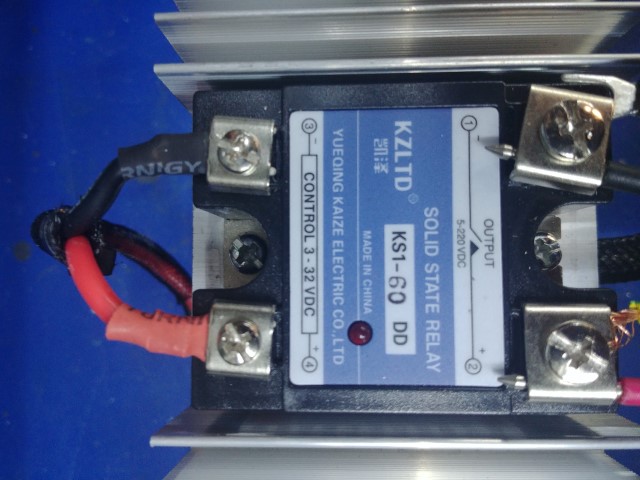SSR and 220 heated bed. Bed always a 120 volts !!
-
Hi ,
Switched from 24 to 220 heated bed.
Connected following this diagram.
I don't know if I am making something wrong but if I connect the 220 side to the relay it doesn't respond , the bed start heating and if I measure the tension on terminal 3 and 4 I have 120 volts (!) ( in a 220 power line)
If I disconnect the 220 side the ssr become controllable , the status led switch on correctly if activated and the resistence in 3 and 4 switch to infinite to almost 0 during activation .

-
What make and model of SSR are you using?
-
I am using a chinese unknow brand I had laying around that I bought only for the massive heat dissipator provided with it
photo attached
I am waiting for a kudom ksi240 d25 ordered 3 days ago .
My purpouse was only test connection but at this point maybe will be better wait for the kudom

-
This isn't a AC really, on the label it says 5-220VDC
So it just will not work with AC mains voltage. It will stay on 100% time and rectifying the voltage (that is why you see 120V on its connection) -
OUCHHHHHH.... I was sure it was ac ...DAMN I am so stupid !!
I was tricked by the 220 numberThank god I didn't made an irreparable mistake!.
-
The label says "5-220 VDC", so It looks like a DC relay to me. Probably a MOSFET which will have a body diode across it which will always conduct when the polarity is reversed. So when off you get half wave rectified mains, when on you will get full AC.
-
If you happen to have a suitable large rectifying bridge you can still use
thea dc ssr. place the heater in series with the ac side of the bridge and the ssr across the dc side, making it a controllable short, with the load in series on the ac side. (It will be extra heat to dissipate and probably extra electrical noise as you loose the zero crossing switching, so better to get a proper ac ssr; however in a pinch..) -
Note that 220V AC has a peak of 331V, so you shouldn't really use a 220V DC relay, even with a bridge.